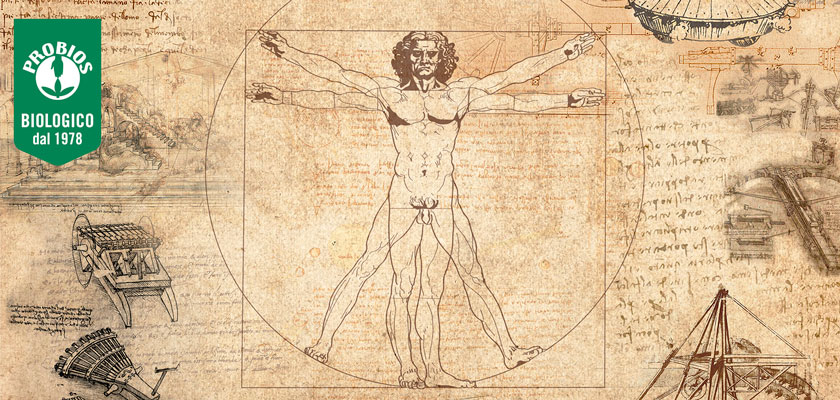
Leonardo da Vinci (1452-1519) is considered the archetype of the universal genius. "Truly admirable painter, sculptor, art theorist, musician, writer, mechanical engineer, architect, set designer, master smelter, artillery expert, inventor, scientist": this is how Giorgio Vasari describes him.
On the 500th anniversary of his death, the world celebrates Leonardo's unparalleled genius. We like to remember him for his cooking passion, offering you to replicate one of his original recipes!
The famous author of "The Last Supper" had an unconditional passion for cooking throughout his life. Vegetarian according to some biographers (he preferred a diet that completely excluded meat), an innovator, an experimenter also in the culinary field, since childhood he had a strong passion for the cooking world.
According to Leonardo, a good chef must have a kitchen always in order: a fire always lit, a reserve of water always boiling, a clean floor, machines for washing, chopping, slicing and peeling. And then music was fundamental, to work better!
Among the numerous and wonderful legacies of the most varied genres, Leonardo has left us some recipes too: such as the Acquarosa, which is prepared by mixing water with lemon, sugar and rose extract, or the Citrus soup for which suffice to squeeze citrus fruit and mix the juice obtained with the beaten egg and the broth.
In his writings, ideas of simple appetizers were recovered such as the boiled onion laid on a slice of buffalo cheese and topped with a sliced black olive, or extravagant and unusual ones like three slices of raw carrot carved in the shape of a seahorse, with a caper on top and a drop of anchovy paste next to it.
He also described some vegetables properties such as turnip and cabbage, which can accelerate a slow digestion "since I saw a sick goat awaken, and a dying cow come back to live cheerfully" and the benefits of a soup with these vegetables.
A botanist, he knew and experimented with herbs and spices, such as turmeric, aloe, saffron, poppy flowers and linseed oil. His recipes, nouvelle cousine of the past, were also designed to try to "civilize" the dishes served, reducing portions and inventing a new way of arranging food in dishes: not by chance, perhaps, in "The Last Supper" the artist paints a small tablecloth next to each diner to clean his mouth and hands...the first napkin in the art history!
Among all Leonardo's recipes come down to us, we have chosen his Chickpeas Pie, trying to replicate one of the dishes conceived by the Italian genius. If you want to dare the authentic recipe in his honor here are his original instructions:
Torta di Cici – Leonardo da Vinci
"Farai cocere una libra di cici rosci, pistali molto bene, et col suo brodo et con una pocha d’acqua rosata gli passarai per una stamegna bene stretta; et habi una libra de amandole ben mondate et bianche piste molto bene, et con esse se vol pistare doi once de uva passa e tre fiche secche, item un’oncia et meza di pignoli rotti un pocho, giongendoli del zuccharo, dell’acqua rosata, de la canella, del zenzevero mescolando bene. Et per farla prendere l’incorporerai de la farina di amitto et mettirala accocere con una crosta di sotto. Quando ti pare cotta mettirai suso del zuccharo e dell’acqua rosata et darali anchora di sopra una bona calda di foco. Et nota che questa torta vole essere bassa".
Chickpeas Pie – Leonardo da Vinci
"Cook a pound of chickpeas, pestle very well, and with their broth and a little pink water pass them in a canvas; take a pound of peeled almonds, pestle well together with an ounce of raisins and three dried figs, then an ounce and a half of crushed pine nuts and add sugar, pink water, cinnamon and ginger, stirring well". And to make it thicken, incorporate starch and put it on the fire. When it seems cooked, add sugar and pink water and continue to cook over high heat. The cake must be low-down".
If you want to experiment with a more modern version, we recommend the Chickpeas farinata, a very low-down savory pie made with water and chickpeas flour, baked in a wood oven to form a delicious golden crust.
To the body [...] if you do not nourish it equal to the nourishment that goes, then life lacks its valetude; and if you give up nourishment, life in everything remains destroyed.
- Leonardo Da Vinci





